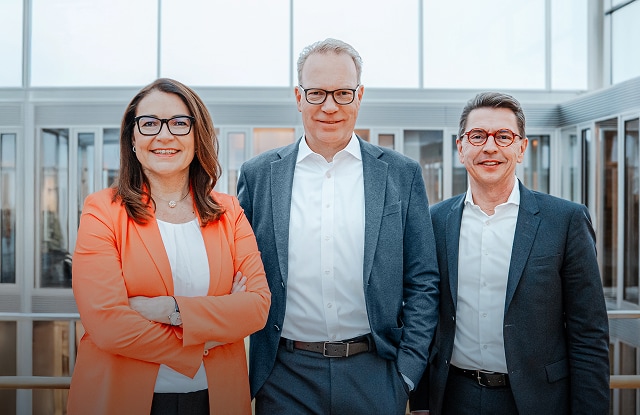E1 Climate change
Strategy
| Climate change adaptation | |||
| Impact materiality | Downstream value chain | Positive impact | Time horizon |
|
Long-term | ||
| Financial materiality | Risk |
|
Long-term |
| Opportunity |
|
Long-term | |
| Climate change mitigation | |||
| Impact materiality | Upstream value chain | Negative impact | Time horizon |
|
Long-term | ||
| Own operations | Negative impact | Time horizon | |
|
Long-term | ||
| Downstream value chain | Negative impact | Time horizon | |
|
Long-term | ||
| Positive impact | Time horizon | ||
|
Long-term | ||
| Financial materiality | Risk |
|
Long-term |
| Opportunity |
|
Long-term | |
| Energy | |||
| Impact materiality | Upstream value chain | Negative impact | Time horizon |
|
Long-term | ||
| Own operations | Negative impact | Time horizon | |
|
Long-term | ||
| Positive impact | Time horizon | ||
|
Long-term | ||
| Downstream value chain | Negative impact | Time horizon | |
|
Long-term | ||
| Positive impact | Time horizon | ||
|
Long-term | ||
| Financial materiality | Risk |
|
Long-term |
| Opportunity |
|
Long-term | |
The Zeppelin Group considers the impacts, risks, and opportunities of climate change, as well as adaptation to its consequences, particularly when investing in new assets, commencing business activities in new markets and countries, and as part of continuous development. The Group carries out climate risk assessments at regular intervals to evaluate acute and chronic risks, taking into account extreme weather conditions and events, in order to avoid negative effects on assets or business relationships.
Zeppelin's goal of achieving greenhouse gas neutrality in Scope 1 and 2 areas by 2030 is based on the Paris Climate Agreement's scenario of limiting global warming to 1.5°C. Key strategies for achieving greenhouse gas neutrality in our business operations include switching to green electricity, using self-generated electricity from photovoltaic modules, promoting e-mobility, and renovating our properties to improve energy efficiency. Zeppelin is also working with partners along the value chain to implement further decarbonization measures, particularly by adapting its product and service portfolio. The transition plan, sustainability targets, and CSR investments have been approved by the Group Management Board and Supervisory Board and are regularly monitored.
Management of impacts, risks and opportunities
Identification and assessment of the main climate-related impacts, risks and opportunities
In 2024, the Zeppelin Group conducted a thorough risk analysis and assessment as part of the double materiality assessment (see ESRS 2) and on climate-related transition risks1.
Transition climate risks
These risks and opportunities are associated with the transition to an environmentally friendly, carbon-free economy and can be divided into different categories. Zeppelin identified regulatory adjustments, such as new or stricter laws and requirements, as well as higher operating and investment costs due to necessary technical upgrades to systems and equipment or the energy-efficient renovation of existing properties, as risks and areas for action. The transformation of the economy is also expected to alter existing sales markets, decreasing the demand for fossil fuel-based products in the long term while increasing the demand for environmentally friendly, low-emission products and services. These risks and opportunities can affect Zeppelin's business activities in various ways and are therefore considered in strategic planning.

The transition risk analysis is based on the assumption that net zero emissions are achieved and that the Paris Agreement is complied with. This is possible under scenarios SSP1-1.9 and SSP1-2.62. These scenarios were used to identify transition risks within risk categories. The identified risks were then assessed and consolidated using the risk methodology. Specific short-, medium-, and long-term time series were defined to determine time horizons. The short- and medium-term periods were based on the CSRD guidelines, and the long-term period was based on the year 2050 in accordance with the Paris Climate Agreement. A PESTEL analysis was conducted to examine, classify, and systematically evaluate the factors influencing the Zeppelin Group. These factors are divided into six categories: political, economic, socio-cultural, technological, ecological-geographical, and legal.
The results of the transitional risk analysis are presented below. The analysis considers the probability of occurrence and financial impact (severity), taking into account the respective time horizon. There are no transitional risks to Zeppelin's business, meaning that respective business and corporate activities can continue. For high-risk areas, appropriate measures to ensure the company's long-term success are determined and implemented as part of the strategy work, taking into account the respective scope of influence.
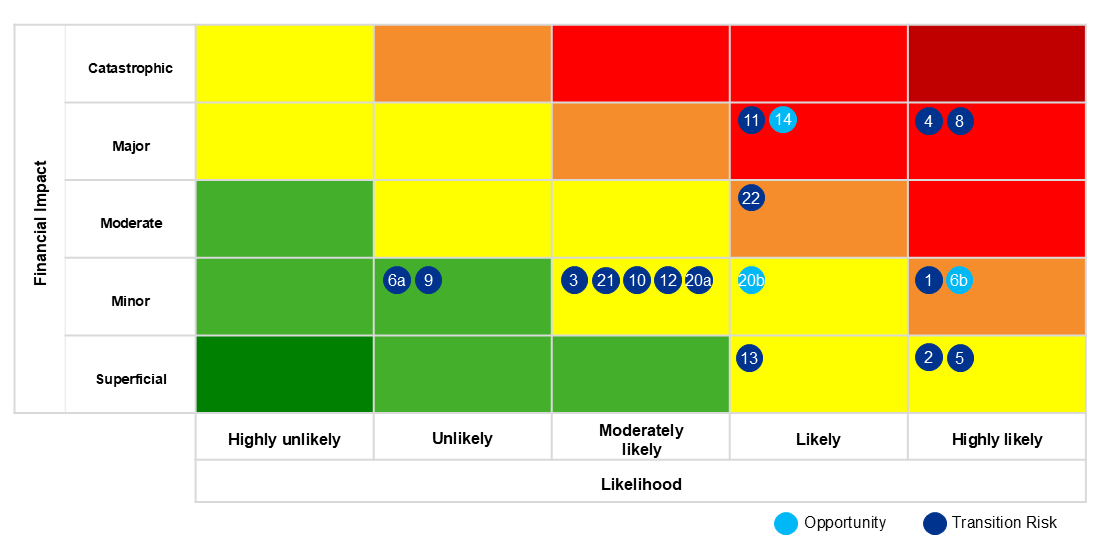
| No. | Description | Type | Time horizon | Likelihood (gross) | Financial impact (gross) |
|---|---|---|---|---|---|
| 4 | Restrictions on fossil fuel-run vehicles restrict the operational capability and modernization efforts of the service fleet | Transition risk | Long-term | Highly likely | Major |
| 8 | Shifting market preferences towards more eco/emission friendly machines/construction processes | Transition risk | Long-term | Highly likely | Major |
| 11 | Limited construction activity due to the overall economic situation | Transition risk | Short-, medium- and long-term | Likely | Major |
| 14 | Positive brand perception and customer loyalty | Opportunity | Long-term | Likely | Major |
| 22 | Supply chain adversities with regard to the availability of pioneering technologies by single suppliers | Transition risk | Medium- and long-term | Likely | Moderate |
| 1 | Increasing carbon prices in Europe with regard to own business activities | Transition risk | Long-term | Highly likely | Minor |
| 6b | Decreasing capital costs due to high ESG performance increase company value | Opportunity | Medium- and long-term | Highly likely | Minor |
| 20b | Improved recruitment due to strong ESG performance | Opportunity | Short-, medium- and long-term | Likely | Minor |
| 3 | Fines and penalties for non-alignment with GHG-emission-related requirements | Transition risk | Long-term | Moderately likely | Minor |
| 21 | Restriction of required, high-emission materials and products | Transition risk | Medium- and long-term | Moderately likely | Minor |
| 10 | Significant deviations from proclaimed GHG emission reduction targets | Transition risk | Medium- and long-term | Moderately likely | Minor |
| 12 | Inadequately trained staff for new products and technologies | Transition risk | Long-term | Moderately likely | Minor |
| 20a | Hampered recruitment due to poor ESG performance | Transition risk | Short-, medium- and long-term | Moderately likely | Minor |
| 6a | Increasing capital costs due to low ESG performance reduce company value | Transition risk | Medium- and long-term | Unlikely | Minor |
| 9 | Dependency on suppliers limits progress towards reaching own emission targets | Transition risk | Long-term | Unlikely | Minor |
| 2 | Increasing carbon prices in (parts of) the supply chain | Transition risk | Medium- and long-term | Highly likely | Superficial |
| 5 | Trade restrictions in relation to climate mitigation measures | Transition risk | Short-, medium- and long-term | Highly likely | Superficial |
| 13 | Unreliable energy supply increases price volatilities and may cause business disruptions | Transition risk | Medium- and long-term | Likely | Superficial |
Physical climate risks
Physical climate risks can arise from the direct consequences of climate change. Examples include an increase in extreme weather events, such as flooding, forest fires, and dry and drought periods. Depending on the respective macro and micro situations, these environmental events can affect each Zeppelin site differently in terms of the probability and extent of damage. Long-term changes, such as rising average temperatures, as well as indirect risks, such as the limited functionality of international supply chains due to local environmental damage, are also considered. At the same time, physical climate risks present opportunities for Zeppelin because these risks require appropriate structural countermeasures, such as expanding flood protection, irrigation, and drainage systems, as well as renovating buildings to be more energy efficient. A more comprehensive analysis of climate-related physical risks is planned for subsequent years.
Resilience analysis
Through sustainable corporate management, the early consideration of market and technological developments, and the consideration of potential opportunities and risks for its business models and corporate development, the Zeppelin Group ensures a high level of resilience to potential changes and crises. The results of the resilience analysis reveal the primary transition, physical, and systemic risks to Zeppelin throughout its entire value chain and business operations. The consequences for society and the environment are also presented.
| Upstream value chain | Own operations | Downstream value chain | |
|---|---|---|---|
| Transition risks | Climate-related transition risks due to the transformation of the economy towards sustainable, low-emission economic sectors | ||
|
|
|
|
| Physical risks | Acute natural events, such as extreme weather events, floods, earthquakes, and droughts | ||
|
|
|
|
| Chronic natural developments, such as long-term water shortages in certain regions, advancing air pollution, and rising sea levels | |||
|
|
|
|
| Systemic risks |
|
||
Policies and actions
As part of its CSR strategy, the Zeppelin Group has set a greenhouse gas (GHG) neutrality goal for its business operations (Scope 1+2). This target and other relevant climate change targets are supported by Group guidelines, including "Sustainability," "CO2 neutrality in the real estate sector," and "Cascading of CSR targets," as well as a modernization strategy for property locations (see ESRS 2). Decarbonization and climate change adaptation measures in the downstream value chain focus on integrating sustainable products and services into the portfolio. In the upstream value chain, the Group promotes close cooperation with suppliers, partners, and service providers, and has implemented a code of conduct that explicitly addresses minimizing emissions.
| Goal | Key action/decarbonization lever (own operations) | Expected results/contribution to target achievement by 2030 | Scope (1/2/3) | Time horizon | Remedial measures (if relevant) |
|---|---|---|---|---|---|
| GHG neutrality in Scope 1+2 (own operations) | Locations (property): Energy-efficient renovations and new buildings that meet the GHG neutrality standard | Contribution to achieving the GHG neutrality target: reduction of around 25 % | 1+2 | 2030 | Not relevant |
| Locations (owned and rented): Use of renewable energies, such as PV systems, heat pumps, green electricity, and district heating | Contribution to achieving the GHG neutrality target: reduction of around 10 %. | 1+2 | 2030 | Not relevant | |
| Own vehicle fleet: Expansion of electromobility and continuous renewal | Contribution to achieving the GHG neutrality target: reduction of around 65 %. | 1+2 | 2030 | Not relevant |
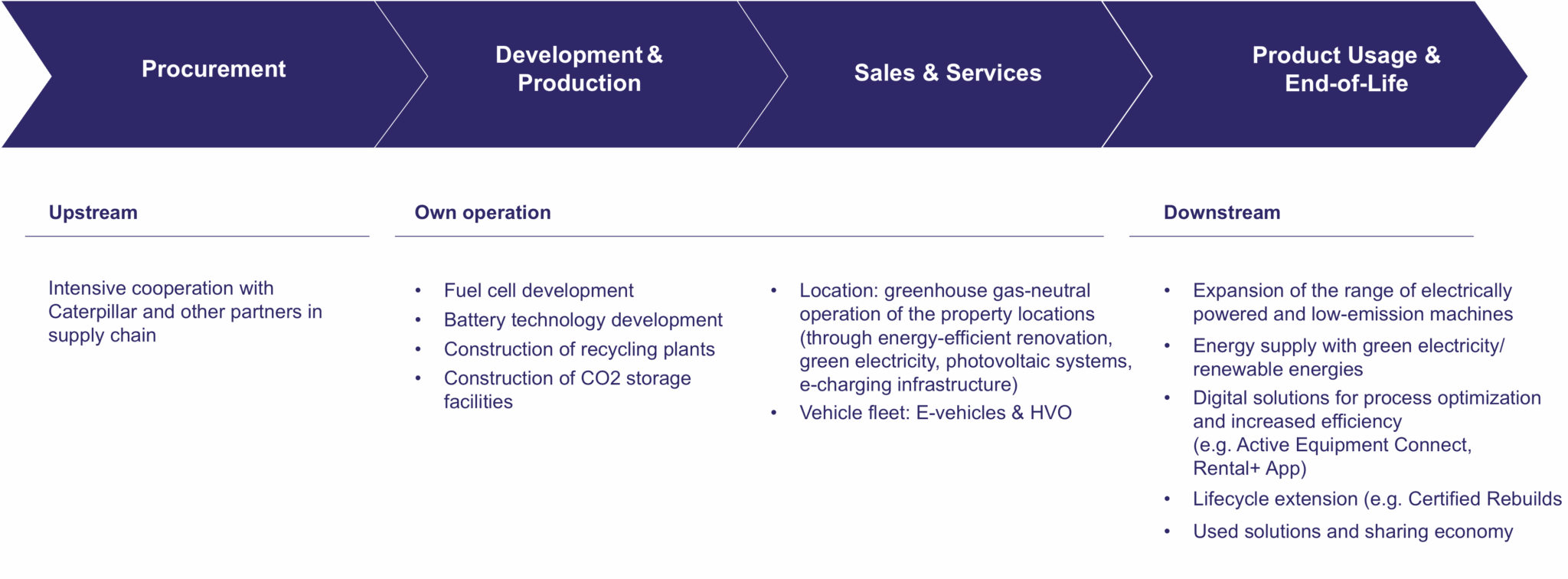
The following climate-related measures are associated with significant investment costs or operating expenses:
| Key action | Time horizon | Total necessary investment and operating expenses | Funds used during the reporting year (in euros) | Future investment and operating expenses |
|---|---|---|---|---|
| A GHG-neutrality strategy involving the expansion of electromobility, the construction of new GHG-neutral buildings, and the energy-efficient renovation of owner-occupied properties | 2030 | N/A | 3.951.255 | N/A |
Progress 2024
| General development |
|
Locations (property): Energy-efficient renovations and new buildings to the GHG neutrality standard
- The Erfurt, Freiburg and Friedrichshafen sites underwent extensive energy renovations during the reporting period. Renewing the building shell and interior fittings, installing photovoltaic systems, air heat pumps, underfloor and circulating air heating systems, and LED lighting made it possible to operate largely free of fossil fuels. Additionally, new buildings designed for climate-neutral operation were completed at the Markgröningen, Landvetter (Sweden), and Eschweiler sites. The new building complex at the Eschweiler site, which includes offices, a workshop, a metalworking shop, a washing hall, an outdoor washing area, an equipment box, a company filling station, and a high-bay warehouse, was built to the KfW Energy Efficiency Standard 55 and completely dispenses with fossil fuels.
- In the reporting year, an office facility in Markkleeberg, Germany, which had been in use for many years and dismantled in 2020 due to a location closure, was rebuilt. This saved the resources required for a new building.
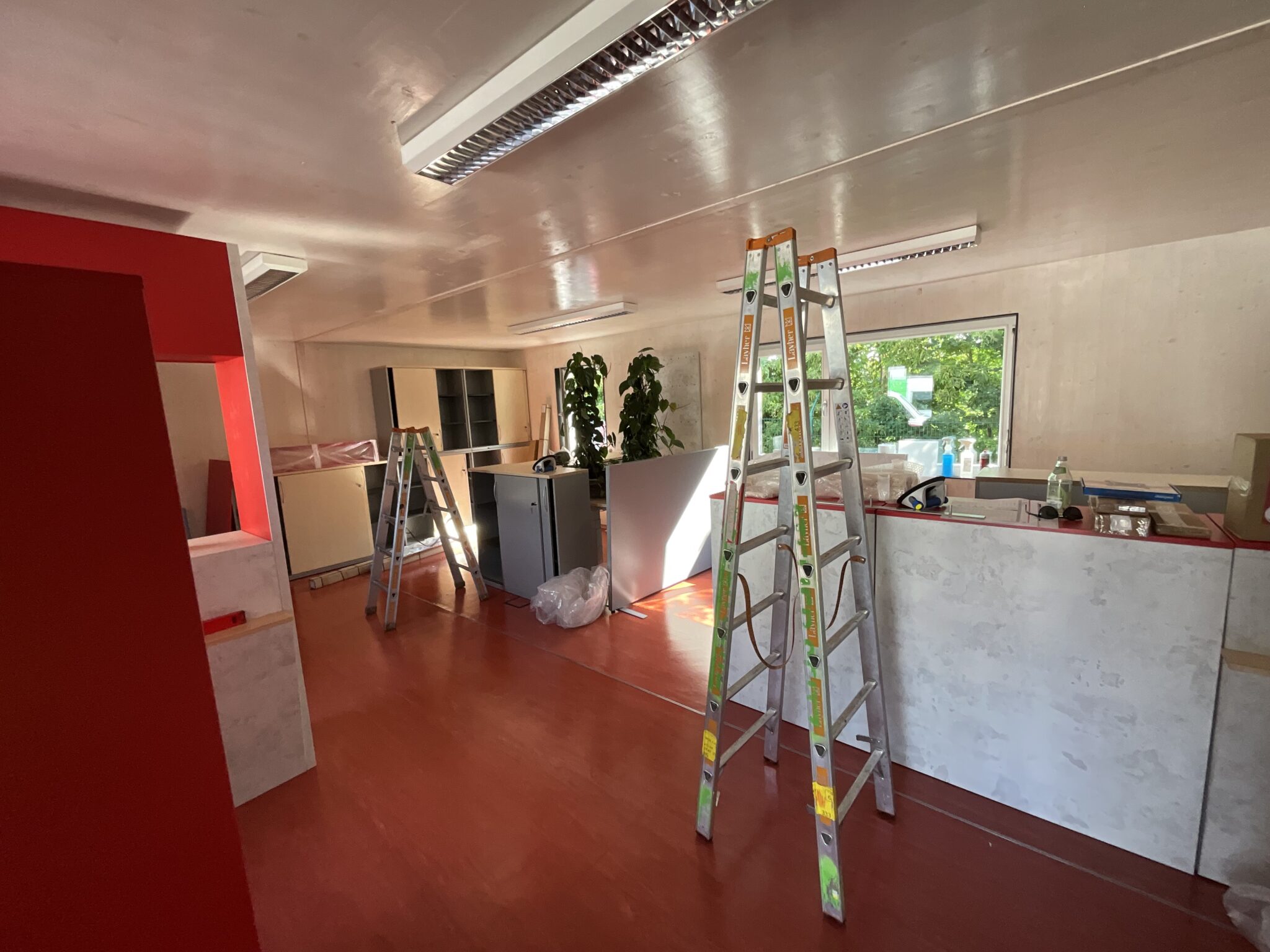
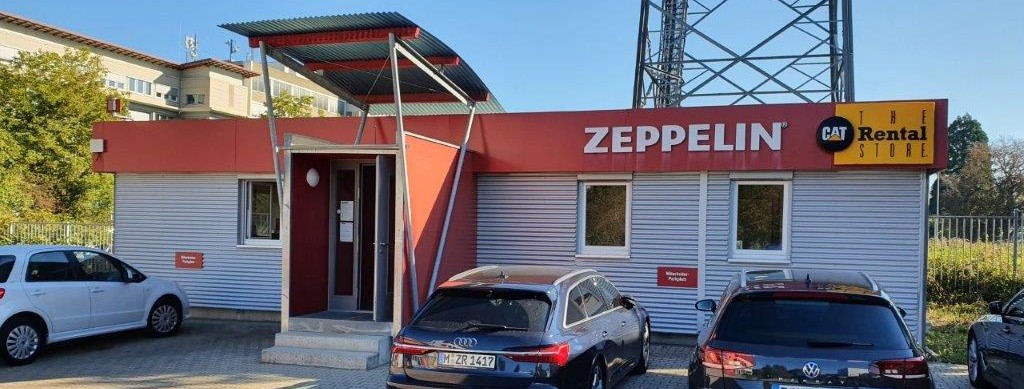
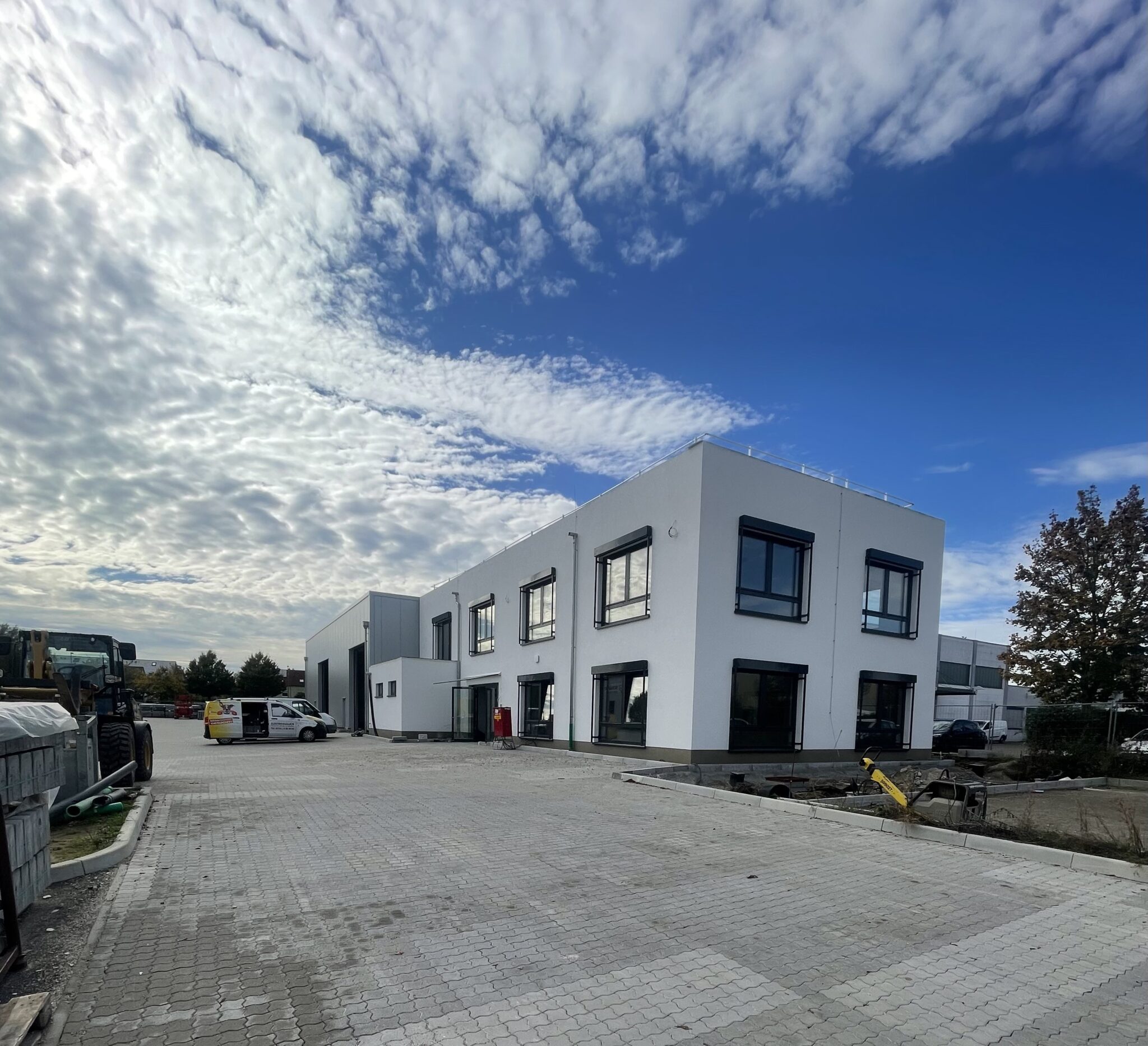
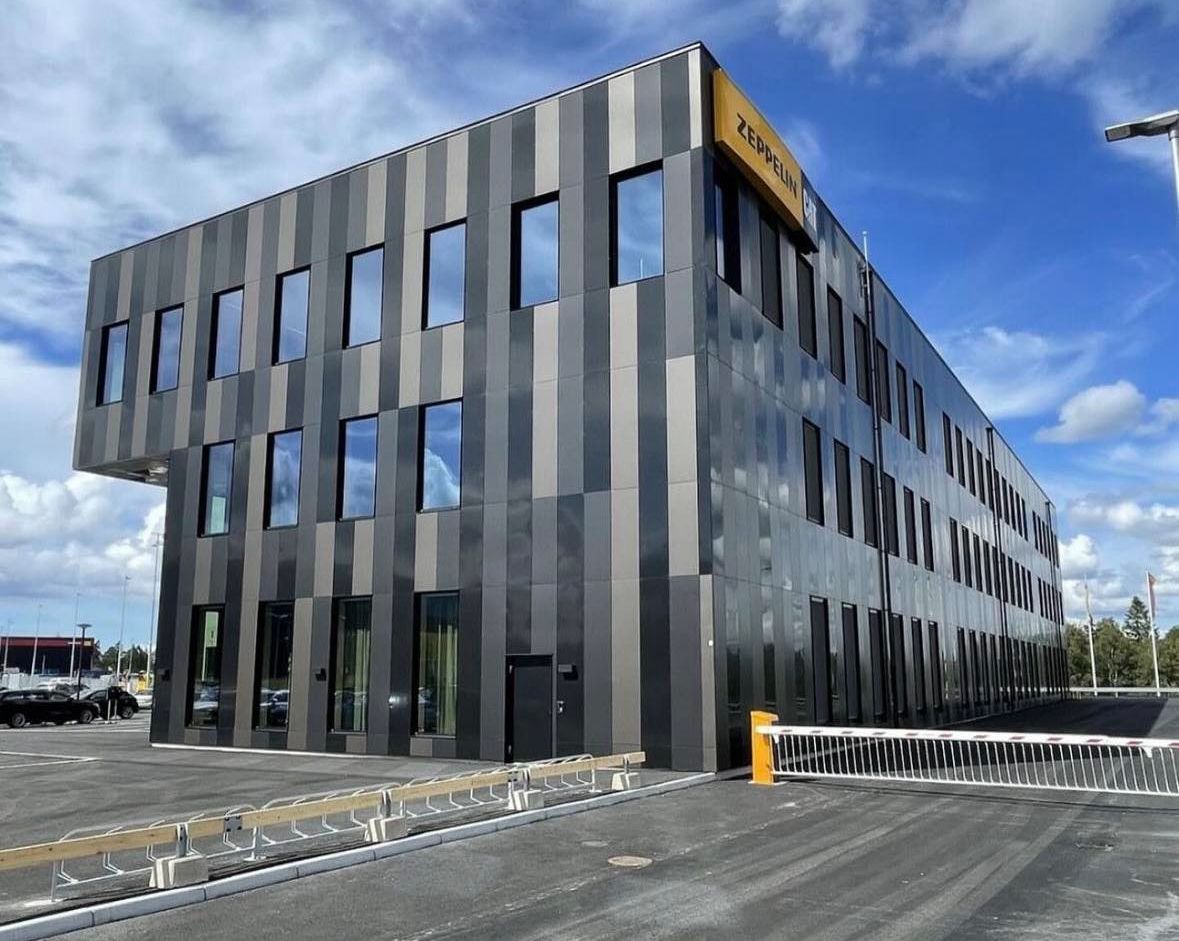
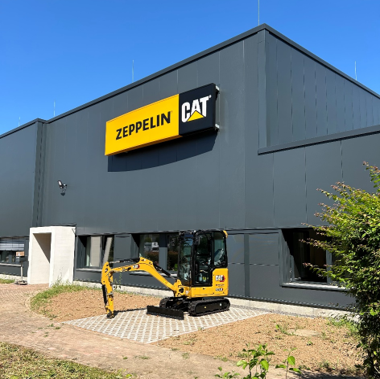
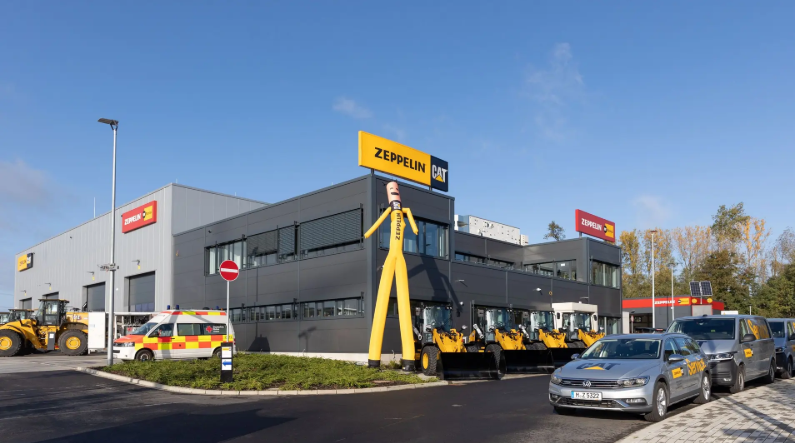
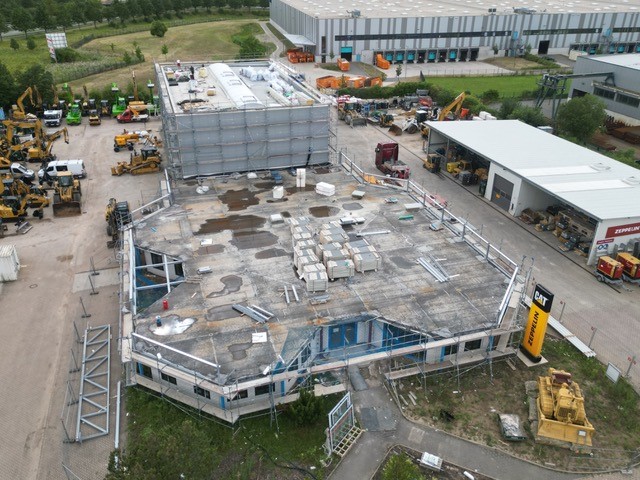
Locations (owned and rented): Use of renewable energies (PV systems, heat pumps, and green electricity)
- New photovoltaic systems were installed at eight locations during the reporting period. Additionally, eight more locations switched to purchasing all their electricity from green sources. This increased the proportion of Group locations with a 100 percent green electricity supply to 52 percent. These measures are reflected in the growing share of renewable energy in total consumption, which increased from 0.8 percent in the previous year to 1.4 percent.
- Zeppelin achieved a milestone at the Friedrichshafen site in early summer 2024. With approximately 8,000 square meters of office space and 30,000 heated square meters in plant engineering halls, the Friedrichshafen site is one of Zeppelin's largest sites worldwide. Installing photovoltaic systems on the parking garage roof and state-of-the-art solar panels on the Ludwig-Dürr-Hall facade meant the entire site could operate independently of electricity for the first time, allowing the cogeneration plant to be temporarily switched off.
Own vehicle fleet: expansion of electromobility
- As part of its modernization strategy, Zeppelin is gradually installing electric charging stations at all of its sites. In the 2024 reporting year, 55 new charging stations were installed, bringing the total number of charging stations at Zeppelin locations worldwide to 338. Additionally, the vehicle fleet is constantly being renewed to take advantage of the efficiency benefits of new models.
- The proportion of electric vehicles in Zeppelin's fleet has increased from 3.6 percent (148 vehicles) to 6.3 percent (277 vehicles). This increase is primarily due to Zeppelin employees with company cars who are increasingly choosing fully electric vehicles.
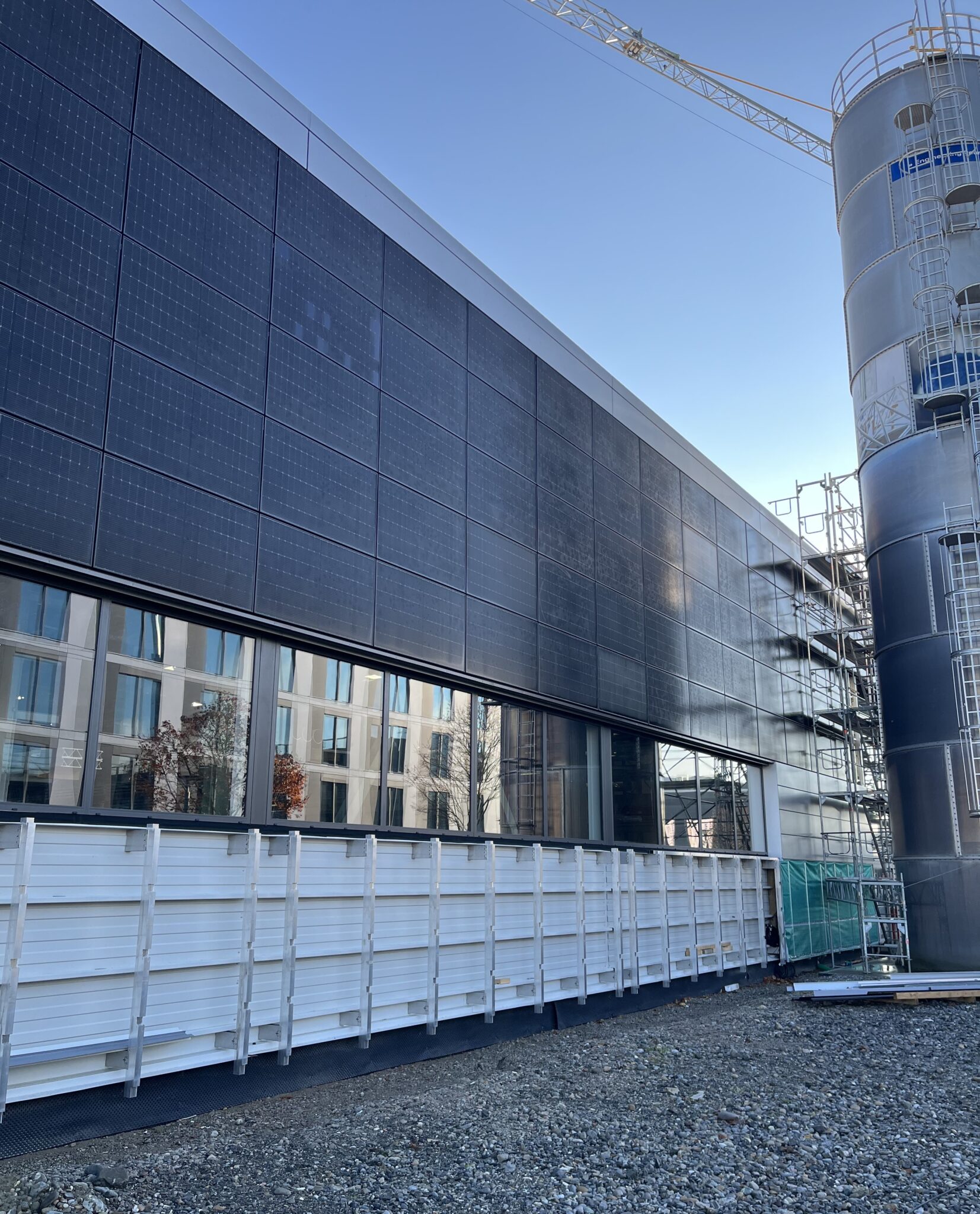
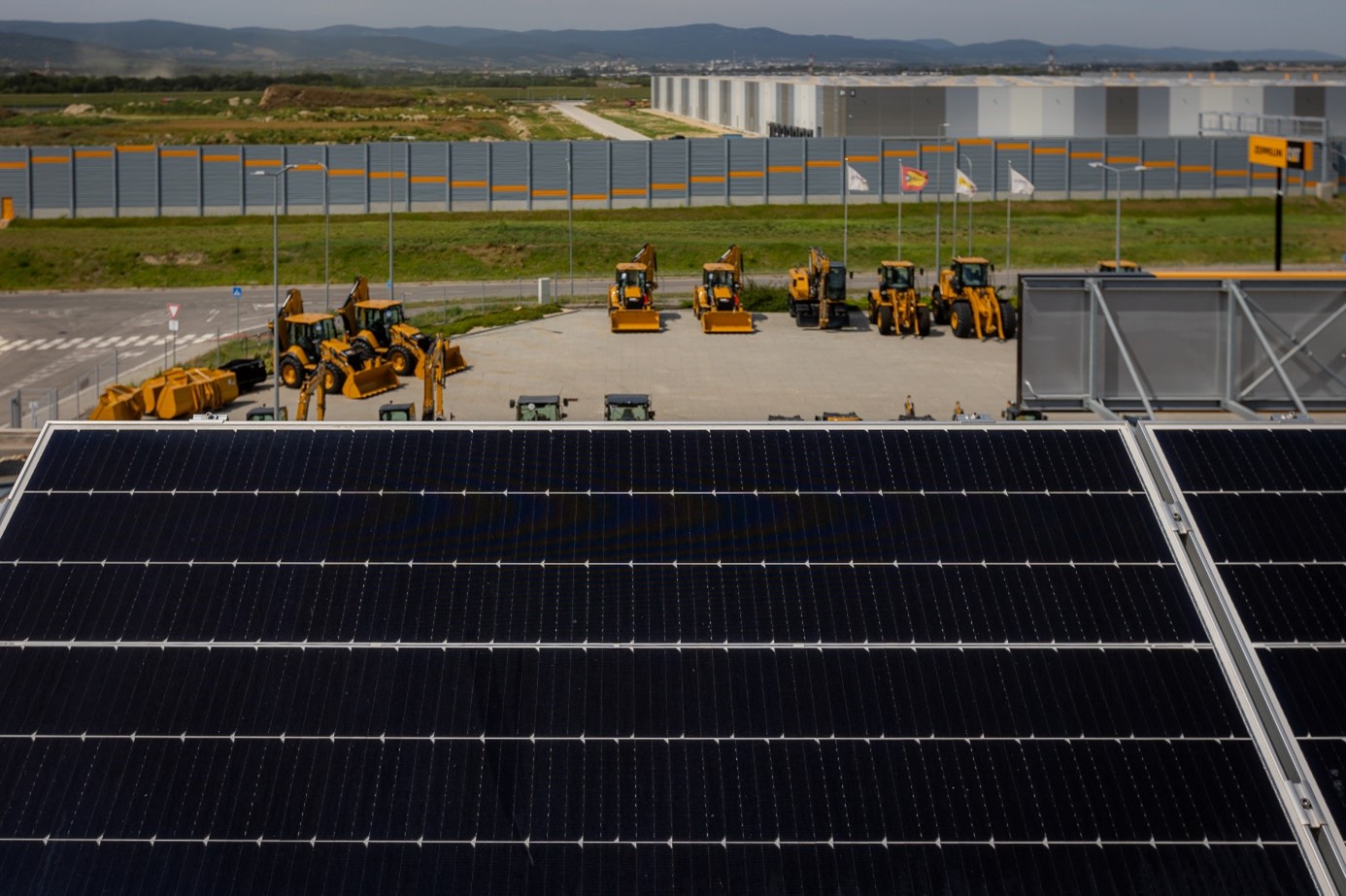
Value chain: expansion of the product and service portfolio
- "Project Impact," which aims to define and create transparency for sustainable products and services in the Zeppelin portfolio, was completed in the reporting year. Seven criteria that positively impact the environment and/or climate were defined for classification as "sustainable": optimization of energy consumption, extension of the life cycle, conservation of resources, reduction of failures and downtime, reduction of emissions (defossilization), increased usage intensity, and reduced environmental and ecosystem impact. The following table shows the sustainable products and services identified accordingly.
| Product/service | Sustainability criterion | Description | SBU |
|---|---|---|---|
| Caterpillar Certified Rebuilds | Lifecycle extension | Zeppelin's Certified Rebuild program doubles the service life of Cat machines. This process prevents emission-intensive production, reduces the consumption of raw materials and resources, and saves on landfill costs | Construction Equipment |
| Caterpillar Remanufacturing | Lifecycle extension | As part of the Cat AT program, valuable returned parts are thoroughly reconditioned and restored to like-new condition for reuse. Consequently, the Cat remanufacturing program at Zeppelin decreases emissions and resource consumption | Construction Equipment |
| Premium Pre-owned Engines & Gensets | Lifecycle extension | Zeppelin Power Systems Used Power offers used and reconditioned generators worldwide. Reusing reduces greenhouse gas emissions and saves material and energy for producing new gensets. Almost the entire Cat product portfolio can be equipped with an SCR system for exhaust gas treatment, meeting IMO Tier III and EPA TIER 4 emission regulations | Power Systems |
| Large heat pumps | Optimization of energy consumption | Heat pumps are climate-friendly, fossil fuel-independent, and highly efficient. They enable the recovery of heat for heating buildings and providing hot water. Retrofitting a CHP unit with a heat pump increases efficiency by making better use of waste heat. Combining them with renewable energies reduces costs and greenhouse gas emissions. Zeppelin serves as a general contractor for the realization of customer-specific projects | Power Systems |
| Efficient Cat motors | Optimization of energy consumption | The Cat C13D is more powerful, economical, quiet, and certified worldwide for all emission levels. Thanks to state-of-the-art technology, fuel savings of up to 10 % are possible. The Cat C13D is also compatible with alternative fuels, such as HVO | Power Systems |
| XE drives and electric machines | Conservation of resources | XE drives are particularly efficient thanks to hybridization with an electric drive. Fully electric machines from Caterpillar are already available or will soon be launched on the market | Construction Equipment |
| Zeppelin Repair Center | Conservation of resources | The work carried out by the Zeppelin Repair Centers enables the reuse of components, thereby reducing greenhouse gas emissions and waste. Additionally, the consumption of fresh water, energy, and raw materials is reduced | Construction Equipment |
| Rental+ Sharing Economy | Conservation of resources | The Rental+ app from Zeppelin minimizes transportation of construction machinery and equipment to and from construction sites. It does this by offering a pool of machines at the construction site. This pool can then be easily accessed by different companies via the app | Rental |
| Tire recycling | Conservation of resources | The goal of tire manufacturers is to produce tires from 100 % sustainable raw materials by 2050. Zeppelin founded the Zeppelin Sustainable Tire Alliance with technology partners in 2023 to support this goal. All partners complement each other technologically and develop new technologies together | Plant Engineering |
| Plastic recycling | Conservation of resources | Zeppelin Systems has a strong presence in many fields:
|
Plant Engineering |
| Digital solutions - AEC | Reduction of failure and downtime | AEC (Active Equipment Connect) is Zeppelins' comprehensive solution for recording and digitizing engine and system data. With AEC, the service life of engines and systems can be extended, and fuel consumption and emissions can be reduced. Impending failures can be detected and avoided early thanks to permanently available data. The digital connection and networking of all engines and systems simplifies fleet management and allows for foresight in planning service calls | Power Systems |
| Ballast water treatment systems | Reduction of environmental and ecosystem impact | Ballast water is essential for modern shipping because it ensures the balance and stability of unladen ships. Zeppelin offers shipyards and ship owners system solutions for ballast water treatment. These solutions range from complete planning and realization of adapted modules to turnkey solutions. UV lamps neutralize small, potentially invasive organisms in the water. Self-cleaning filters remove larger organisms and particles | Power Systems |
| Holistic solutions | Reduction of emissions/ defossilization, conservation of resources, increase in intensity of use | Zeppelin Rental's ecoSolutions covers individual components as well as holistic solution packages. These include green energy solutions, such as green electricity, energy management in accordance with ISO 50001, PV consulting, and mobile charging solutions; waste management; and modular space solutions | Rental |
| Battery technology | Emission reduction/ defossilization | Zeppelin Systems has many market references from implemented projects. Zeppelin can supply the complete material handling chain for battery production, starting with mixing technology. Zeppelin actively participates in partnerships and research projects to remain an important system supplier and expand its value chain in this rapidly growing market | Plant Engineering |
| Storage of CO2 | Emission reduction/ defossilization | However, it will not be possible to stop global warming simply by reducing new CO₂ emissions. New technologies, such as CO₂ storage (direct air capture, DAC), are necessary. This process involves extracting and binding CO₂ from the air through a series of chemical reactions. The extracted CO₂ can then be stored or further processed. Zeppelin Systems is the partial supplier for a large-scale DAC plant in the USA. Zeppelin supplies the engineering and material handling equipment | Plant Engineering |
| Solar panels and microgrids | Emission reduction/ Defossilization | A microgrid is a small-scale power supply network that can be connected to the public power grid or operate independently. Several generation plants and consumers are connected to a microgrid. Zeppelin offers Cat photovoltaic modules, energy storage systems, and converters. Cat solar panels can be integrated into existing systems, such as combined heat and power (CHP) or emergency power systems. Cat microgrids provide cost-effective power for grid-connected and off-grid systems, ensuring the optimal delivery and storage of energy sources | Power Systems |
| Fuel cells - PEMFC power generators | Emission reduction/ defossilization | A Proton Exchange Membrane Fuel Cell (PEMFC) is a low-temperature fuel cell mostly used for mobile applications with dynamic loads. Zeppelin Rental and Power Systems are collaborating on the development and introduction of the fuel cell generator. It is a hybrid system that includes a battery and control system. Power Systems is responsible for development, design, and system integration. A pilot application will be tested at Zeppelin Rental | Power Systems, Rental |
| Alternative fuels | Emission reduction/ defossilization | Many Cat brand engines can operate using alternative fuels that produce fewer pollutants and greenhouse gases. These include biodiesel and HVO (hydrotreated vegetable oils), as well as methanol and hydrogen. These fuels are considered key for decarbonizing the shipping industry | Construction Equipment, Rental, Power Systems |
| SBU Construction Equipment | www.zeppelin-cat.de/produkte/ |
| SBU Rental | www.zeppelin-rental.de/ecosolutions |
| SBU Power Systems | www.zeppelin-powersystems.com/de/de/unternehmen/nachhaltigkeit/ |
| SBU Plant Engineering | www.zeppelin-systems.com/de/de/produkte-loesungen/loesungen/ |
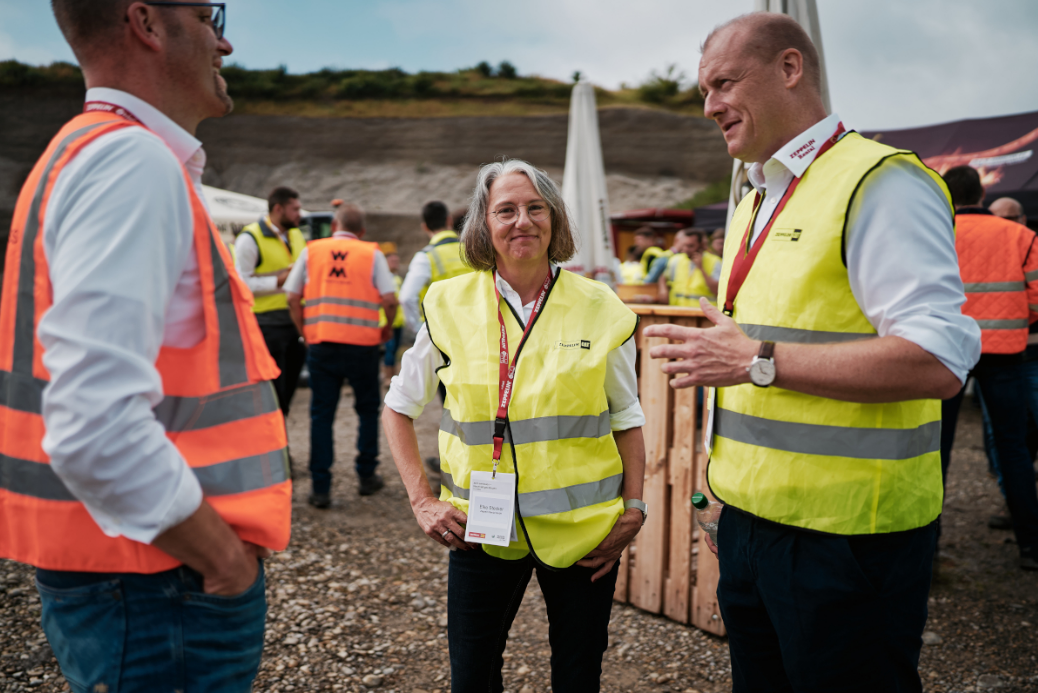
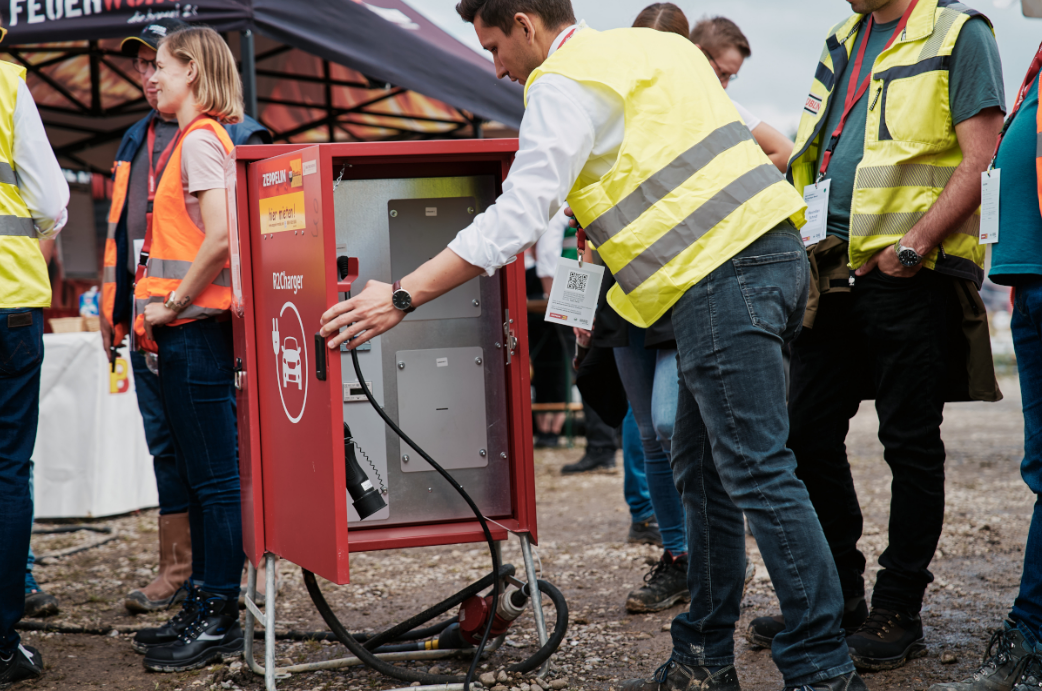
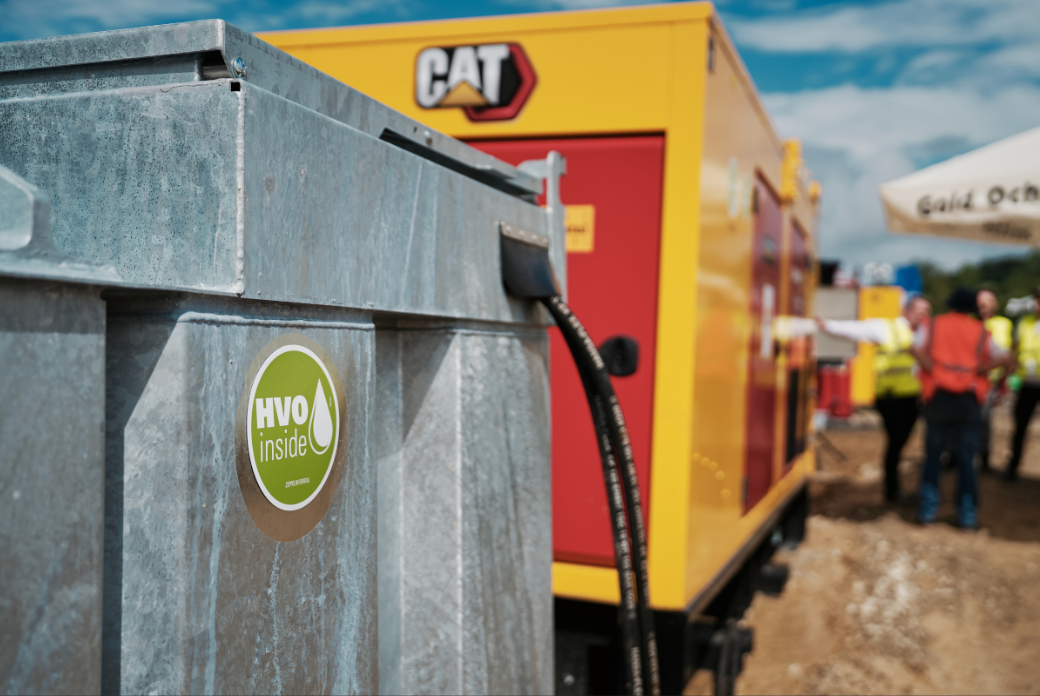
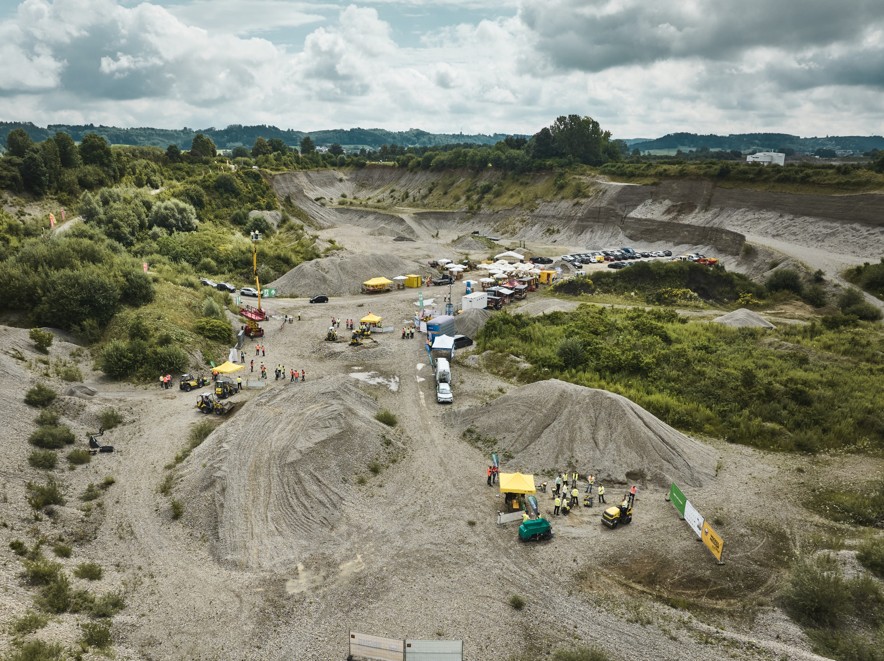
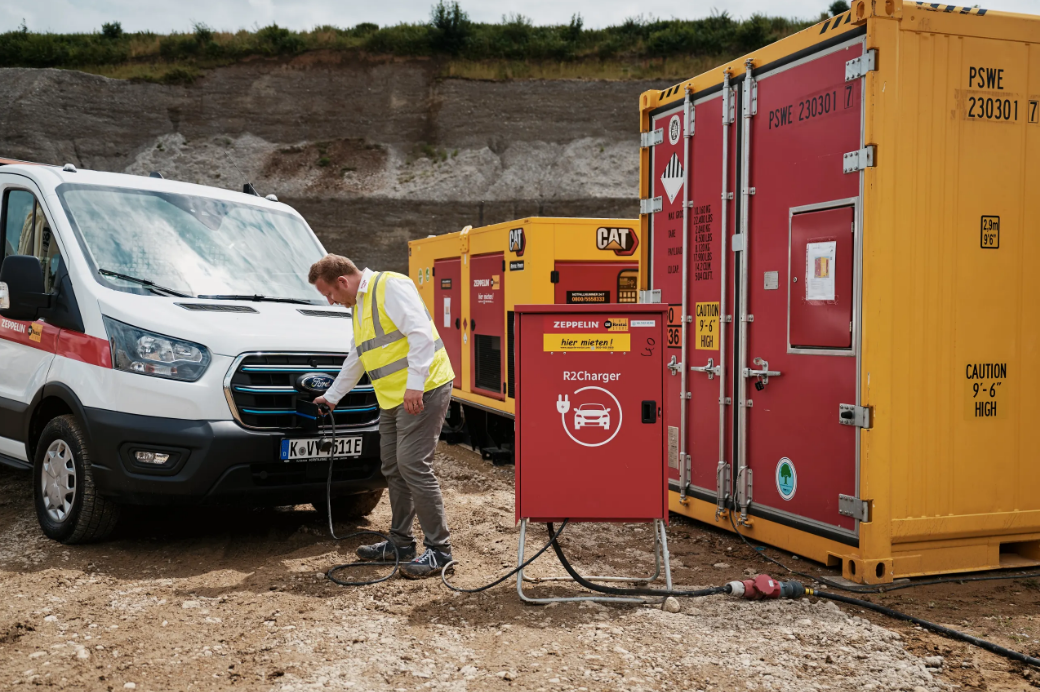
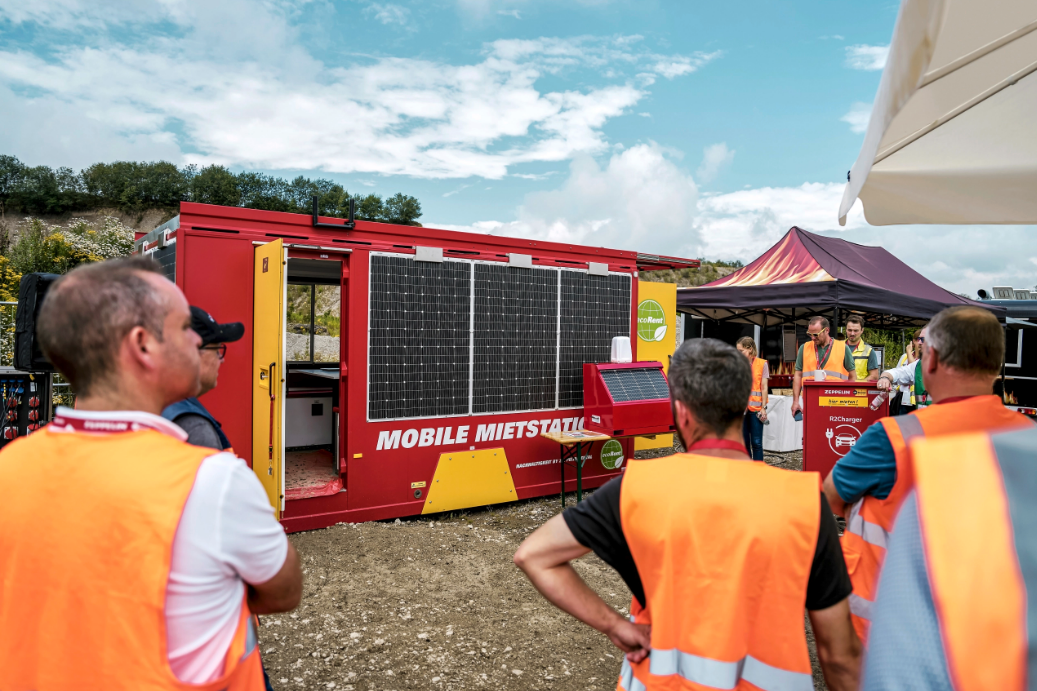
Targets and metrics
The following climate change targets were set in consultation with the Group Management Board and in accordance with Group policies.
| Goal | Target value | KPI | Scope | Base year | Base value | Time horizon | 31.12.2024 | Change to | |
|---|---|---|---|---|---|---|---|---|---|
| BY | PY | ||||||||
| GHG neutrality in ongoing business operations (Scope 1+2) | 0 t CO2e | GHG emissions Scope 1+2 (market-based) in tons CO2 equivalents | Group | 2022 | 44,479 t CO2e | 2030 | 38,252 t CO2e |
-14.0 % | -7.1 % |
| Milestone: Reduce GHG emissions by 46 % (Scope 1+2) | 24,019 t CO2e | GHG emissions Scope 1+2 (market-based) in tons CO2 equivalents | Group | 2022 | 44,479 t CO2e | 2027 | |||
| Reduction of 9.5 % in energy consumption (excluding mobility) per million euros in sales | 19.3 MWh/EURm | Energy consumption (excluding mobility) per million euros in sales | Group | 2022 | 21.3 MWh/EURm | 2027 | 19.1 MWh/EURm |
-10.3 % | -3.0 % |
| Milestone: Reduce energy consumption by 1 % per year | 75,800 MWh | Total electricity and heat consumption in MWh | Germany | Previous year | 76,566 MWh | 2025 | 71,511 MWh | -6.6 % | |
Metrics: Energy
The balance sheet limit for determining energy consumption corresponds to the scope of consolidation for non-financial reporting. The energy consumption of each location is divided into its respective energy sources, such as gas, heating oil, or electricity, and recorded in software for non-financial indicators. In the event that the recording of energy consumption is not feasible, such as in instances where flat-rate service charge invoices are utilized or the space is rented to multiple users, the system will make simplifications and provide appropriate notes.
| Type of energy | 2023 | 2024 |
|---|---|---|
| (1) Consumption of natural/liquid/propane gas (MWh) | 32,244 | 31,857 |
| (2) Consumption of district/local heating (MWh) | 10,165 | 8,662 |
| (3) Heating oil consumption (MWh) | 2,574 | 2,321 |
| (4) Diesel consumption (heating) (MWh) | 136 | 0 |
| (5) Hard coal consumption (MWh) | 0 | 41 |
| (6) Total heat consumption (MWh) (sum of lines 1 to 5) | 47,119 | 42,881 |
| (7) Electricity consumption (MWh) | 28,845 | 27,571 |
| (8) Electricity consumption (vehicle fleet) (MWh) | 602 | 1,059 |
| (9) Total electricity consumption (MWh) (sum of lines 7 to 8) | 29,447 | 28,630 |
| (10) Diesel consumption (vehicle fleet + other) (MWh) | 97,903 | 97,873 |
| (11) Gasoline consumption (MWh) | 7,694 | 6,741 |
| (12) Consumption of HVO (Hydrotreated Vegetable Oil) (MWh) | 9 | 23 |
| (13) Ethanol consumption (MWh) | 59 | 209 |
| (14) CNG (compressed natural gas) consumption (MWh) | 31 | 0 |
| (15) Total fuel consumption (MWh) (sum of lines 10 to 15) | 105,696 | 104,846 |
| (16) Total consumption of renewable energies (MWh) | 1,486 | 2,516 |
| Total energy consumption (MWh) (sum of lines 6, 9, 15 and 16) | 183,748 | 178,873 |
| Energy consumption electricity and heat (MWh) (sum of lines 6 and 9) | 76,566 | 71,511 |
| Energy consumption excluding mobility (MWh) (sum of lines 6, 7, 11 and 16) | 77,314 | 72,968 |
| Sales revenue (gross) (in thousand euros) | 3,934.7 | 3,819.6 |
| Energy consumption excluding mobility per million euros in sales | 19.6 | 19.1 |
| Country | 2024 |
|---|---|
| Armenia | 2,804 |
| Austria | 6,040 |
| Belgium | 283 |
| Brazil | 725 |
| China | 449 |
| Czech republic | 11,335 |
| Denmark | 8,987 |
| Estonia | 128 |
| France | 145 |
| Germany | 112,386 |
| Great Britain | 221 |
| Greenland1 | 0 |
| India | 329 |
| Italy | 489 |
| Poland | 3,575 |
| Russia | 2,831 |
| Saudi Arabia | 224 |
| Singapore | 23 |
| Slovak Republic | 3,408 |
| South Korea | 15 |
| Sweden | 16,878 |
| Switzerland | 53 |
| Tajikistan | 146 |
| Turkmenistan | 627 |
| Ukraine | 5,350 |
| USA | 563 |
| Uzbekistan | 857 |
| Zeppelin Group total (sum of all countries) | 178,873 |
| 1 Data assigned to Denmark. |
To ensure a level of comparability, energy intensity data for the 2024 reporting year will continue to be reported in accordance with previous years and not according to the ESRS.
| Metric | 2023 | 2024 |
|---|---|---|
| Energy intensity per employee Total energy consumption per employee (MWh/FTE) |
18.4 | 17.7 |
| Energy intensity per gross sales revenue Total energy consumption per million euros gross sales revenue (MWh/EURm) |
46.7 | 46.8 |
Metrics: Greenhouse gas emissions
All fully consolidated companies of the Zeppelin Group are included in the calculation of greenhouse gas emissions. The basis for calculating greenhouse gas emissions for both Scope 1 and Scope 2 is the energy consumption data of the respective locations. Each energy source is assigned a CO2 equivalent (CO2e), with country- or location-specific characteristics (e.g., electricity mix, contract content) taken into account to the greatest extent possible. Carbon dioxide equivalents are units of measurement that summarize various greenhouse gases (GHG) in one value. This summary is based on their respective contributions to the greenhouse effect compared to carbon dioxide (CO2). These units enable the comparison and quantification of the impact of different gases on climate change. Greenhouse gas emissions are calculated on both a market-based and a location-based basis. The emission factors required for conversion are maintained in central software so that GHG emissions are calculated automatically once the respective energy consumption has been entered. The emission factors used are regularly reviewed to ensure they are current and accurate, and any necessary corrections are made. The respective energy consumption is multiplied by the CO2 equivalent. The total emissions for each energy source are calculated to determine the carbon footprint of the site or, on a highly aggregated basis, the Group company or SBU. As part of the energy management system, metrics are periodically reviewed by our certification body (see ESRS 2). However, please note that greenhouse gas metrics are not yet validated by an external entity.
As part of the ongoing digitalization process, the Zeppelin Group began implementing smart meters at its German locations in 2024 with the objective of improving data availability and quality. A gradual conversion of further meters, both nationally and internationally, is planned for 2025.
Zeppelin calculated all Scope 3 emissions for 2023 in the reporting year. In accordance with the initial determination for 2022 (see Sustainability Report 2023), the objective was to enhance the data collection processes. "Use of our products" was confirmed as the most relevant category, accounting for around 91.5 percent of our Scope 3 emissions. No Scope 3 emissions were determined for the 2024 reporting year. As a result, greenhouse gas emissions will continue to be reported in the same manner as in previous years. They will not be reported in accordance with the ESRS for the time being, in order to enhance comparability.
| Retrospective | Reporting year | Milestones and target years | |||||
|---|---|---|---|---|---|---|---|
| Base year 2022 | Previous year 2023 | 2024 | Change compared to previous year | Change compared to base year | 2027 | 2030 | |
| Greenhouse gas emissions Scope 1 | |||||||
| GHG emissions Scope 1 (t CO2e) | 36,843 | 35,709 | 34,422 | -3.6 % | -6.6 % | N/A | 0 |
| Greenhouse gas emissions Scope 2 | |||||||
| GHG emissions Scope 2 Location-based (t CO2e) | 15,199 | 14,762 | 11,747 | -20.4 % | -22.7 % | N/A | 0 |
| GHG emissions Scope 2 market-based (t CO2e) | 6,916 | 5,463 | 3,830 | -44.6 % | -29.9 % | N/A | 0 |
| Total GHG emissions: Scope 1+2 | |||||||
| GHG emissions Scope 1+2 Location-based (t CO2e) | 52,041 | 50,471 | 46,179 | -8.5 % | -11.3 % | N/A | 0 |
| GHG emissions Scope 1+2 Market-based (t CO2e) | 44,479 | 41,172 | 38,252 | -7.1 % | -14.0 % | 24,908 | 0 |
| Country | 2024 | |
|---|---|---|
| Location-based | Market-based | |
| Armenia | 653 | 653 |
| Austria | 1,498 | 1,345 |
| Belgium | 65 | 65 |
| Brazil | 44 | 44 |
| China | 260 | 260 |
| Czech republic | 3,138 | 2,604 |
| Denmark | 2,282 | 1,698 |
| Estonia | 34 | 34 |
| France | 33 | 33 |
| Germany | 29,376 | 23,836 |
| Great Britain | 52 | 52 |
| Greenland | 0 | 0 |
| India | 205 | 156 |
| Italy | 117 | 109 |
| Poland | 898 | 896 |
| Russia | 801 | 801 |
| Saudi Arabia | 65 | 65 |
| Singapore | 9 | 9 |
| Slovak Republic | 919 | 919 |
| South Korea | 7 | 1 |
| Sweden | 3,482 | 2,466 |
| Switzerland | 12 | 10 |
| Tajikistan | 44 | 44 |
| Turkmenistan | 231 | 231 |
| Ukraine | 1,517 | 1,481 |
| USA | 187 | 187 |
| Uzbekistan | 250 | 250 |
| Zeppelin Group total (sum of all countries) | 46,179 | 38,252 |
To ensure a level of comparability, the greenhouse gas intensity for the 2024 reporting year will continue to be reported in the same manner as in previous years, rather than according to the ESRS.
| Metric | 2023 | 2024 |
|---|---|---|
| GHG intensity per employee GHG emissions Scope 1+2 (market-based) per employee (t CO2e/FTE) |
4.1 | 3.8 |
| GHG intensity per gross sales revenue GHG emissions Scope 1+2 (market-based) per million euros gross sales revenue (t CO2e/EURm) |
10.5 | 10.0 |
The Zeppelin Group does not currently utilize an internal CO2 pricing system. A concept is currently being developed, and a possible introduction for the 2026 financial year is being examined.
Disclosures pursuant to Article 8 of Regulation (EU) 2020/852 (Taxonomy Regulation)
The EU taxonomy is a classification system for sustainable economic activities. The primary objective is to encourage sustainable investments to align with the goals of the EU Green Deal.
As part of the preparations for reporting in accordance with CSRD/ESRS and the EU Taxonomy Regulation, an interdisciplinary project team on the EU Taxonomy was established in 2023. This team conducted a kick-off and initial assessments of economic activities. In 2024, an implementation concept was developed and financial processes and systems were adapted. This allows for the efficient collection of necessary data during ongoing operations. Additionally, a dry run was conducted with the support of external consultants on the following metrics of the EU taxonomy:
- Capital expenditures (CapEx) that meet the criteria for both Taxonomy-eligible and Taxonomy-aligned
- Operating expenses (OpEx) that meet the criteria for both Taxonomy-eligible and Taxonomy-aligned
- Sales revenue that meets the criteria for both Taxonomy-eligible and Taxonomy-aligned
- “Do No Significant Harm” (DNSH) check
The results are used for continuous improvement and preparation for future reporting.
1 Transition risks arise from the social and economic changes necessary for a transition to a low-carbon future. These risks may include political, regulatory, market, reputational, technological,
and legal risks.
2 According to ESRS E1, climate-related transition risks should be identified by considering at least one climate scenario consistent with limiting global warming to 1.5°C with no or limited
overshoot (see ESRS E1 IRO-1.20ci). An increase in the global average temperature of up to 1.6°C is considered limited, while an increase of up to 1.8°C is considered a strong overshoot. Both are
in line with the Paris Agreement. Therefore, SSP1-1.9 is the required scenario for the transition climate risk analysis. However, it is recommended that SSP1-2.6 be considered in conjunction with
SSP1.1-9 because the CO₂ trajectories implied in SSP1.1-9 are no longer considered realistic by the majority of the scientific community

